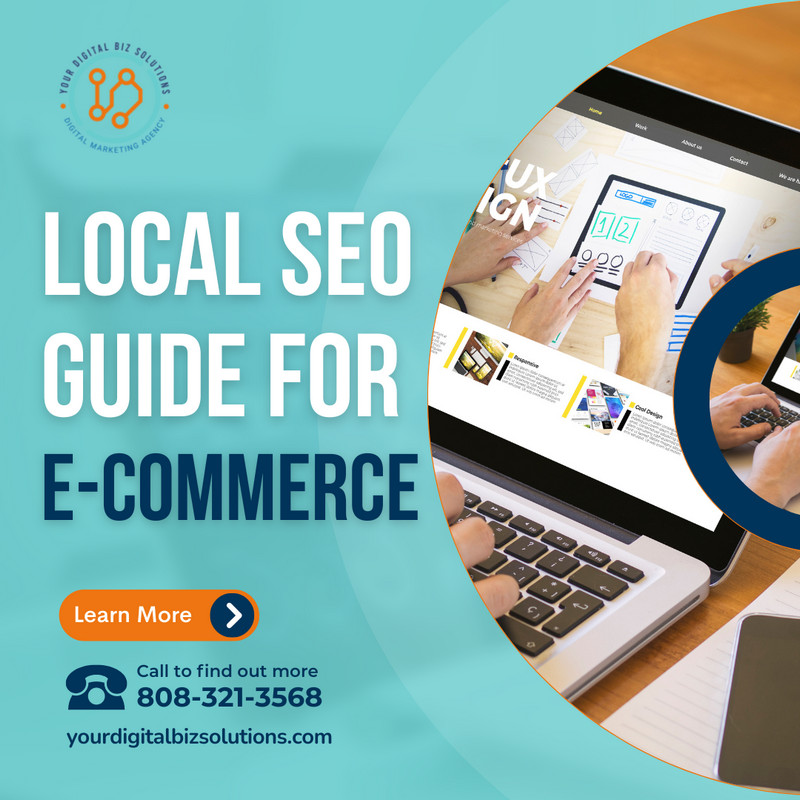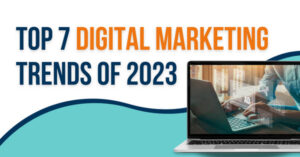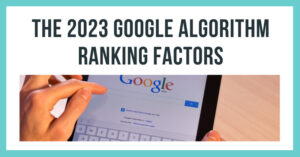In this article, we will discuss how Search Engine Optimization (SEO) directly influences the e-commerce industry, shedding light on the crucial role it plays in driving the consumer market and its demands.
When COVID-19 forced people to physically isolate themselves from the rest of the world, the e-commerce industry noticed a sudden increase in the demand for online shopping.
Since most physical stores were shut down during the onset of the pandemic, people rushed to online shops to order everything they needed, from basic necessities such as food and clothing to personal wants such as gaming equipment and collectibles.
When the public resorted to online shopping, many small and huge businesses also followed through. For them, it was now a battle between who had the most online presence and who can bring in more customers. The previous offline marketing methods of handing out leaflets and posting flyers around districts became ineffective, having been overtaken by online advertisements and promotions.
Importance of Local SEO for E-Commerce
Search Engine Optimization (SEO) has long been used even before the pandemic started with the sole objective of increasing exposure and foot traffic to a certain location. Ever since the e-commerce industry experienced an upsurge when the pandemic hit, SEO became an integral part of how businesses continue to thrive.
SEO encompasses creating improved changes on your website to boost its exposure when consumers use Google, Bing, and other search engines to look for items or services linked to your business.
The higher your page’s exposure in search results, the more likely you are to draw attention and attract new and existing clients to your company. This is because users trust search engines and having a website that appears in the top results for the terms the user is looking for, emphasizes its credibility.
Maximizing the use of SEO will definitely keep you one step ahead of your competitors. In the case where two websites sell the same product, the one that is optimized for search engines is more likely to attract more visitors and generate more sales.
What Tactics to Include in E-Commerce SEO Strategy
Hundreds of adjustments to the search engine ranking algorithm are made every year. That being said, last year’s SEO approach may not work this year, and today’s SEO strategy may not work next year. Below, we’ve broken down the top SEO techniques to help you keep and grow your organic search presence.
Keyword Research
Establishing the main keywords that you are going to use is the first and one of the very vital steps in incorporating SEO into e-commerce. This part is important because getting it wrong will lessen your chances of securing a spot on the first page of the search engine.
A mistake in analyzing the keywords will direct you to be ranked for keywords that do not get a lot of traffic from the public, leading to a significant decrease in your website visits and ultimately, your sales.
The secret to effective keyword research lies in performing e-commerce keyword research, finding keyword difficulty and search volume, and uncovering buyer intent. This can be done in three ways: using Amazon for keyword search, finding keywords through competitor research, and using various SEO tools.
Site Architecture
Site architecture refers to the structure of your e-commerce website and it encompasses the organization of its elements, pages, links, and navigation.
The idea is to immediately catch the attention of the site visitors and bring the greatest, most relevant information in front of them while lowering the number of clicks and time spent to get it.
The golden rules of maintaining a great site structure are the following: making your site simple and user-friendly to avoid confusing customers, creating highly relevant page URLs and subdirectories using keyword research, and ensuring that it will take no more than three clicks to navigate from one page to another.
On-Page SEO
It is all about making sure your keywords are in the appropriate locations when it comes to On-Page SEO for the e-commerce industry. On-Page SEO is simply a technique for search engines to understand what your page is about. It plays a significant role in maintaining a website’s relevance because it aids your visibility in other Search Engine Results Page (SERP) elements as well.
On-Page SEO can be used in three areas: category pages, product pages, and blog content. A good example of this would be placing your primary keyword in the designated URL and making it simple will properly optimize your site, increasing its chances of topping the search rankings.
Technical SEO
While keywords play a huge role in the organization of SEO and its system, SEO isn’t only about them. There is also a technical component to consider, such as the site performance, user-friendliness, and functional links. At the end of the day, it’s all about giving your users the greatest possible experience.
Technical SEO audits are important because it gives you a general idea of the quality and current state of your website. Thus, a good site audit not only does that but also makes it simpler to establish a to-do list of tasks to do before focusing on off-page SEO and guarantees that you obtain the finest outcomes with the least amount of effort.
While it may seems like very hectic work to do, there are various SEO tools available (i.e. Ahref, Screaming Frog) that can definitely help you do things correctly and efficiently.
Local SEO
In most cases, when you own a physical store or you simply want more local site visitors, local SEO can give you an advantage. A good example of this would be partaking in the Google My Business feature which allows you to input the important details people should know about your business, such as your operating hours, contact number, address, and many more.
Doing so will include you in Google’s database, allowing your business to easily show up in local search results.
Content Marketing
There is no doubt that content marketing is one of the biggest strategies that continue to dominate the industry today. It’s not simple to garner attention online and obtain the greatest results from digital marketing initiatives in an age where anything might go viral one day and then fade away the next.
However, content marketing is there to save the day, becoming the most crucial component of any internet marketing effort.
Since product and category pages can only rank for a limited number of keywords, this is where content marketing comes in. It allows you to formulate long phrases that include longer keywords such as “the top five best [product] for children,” “how to properly wash your [product],” and many more.
Link Building
Backlinks are referred to as links that indicate traffic to a page on your website from websites other than your own. Backlinks of varying quality and number might help you rank better in search engines like Google and Bing.
As such, backlinks to your website from other websites with strong domain authority help you more than almost any other ranking consideration. It is a little more involved and time-consuming than just making a website change; thus, the term ‘off-page SEO.’ To get such links, you will need to work with other bloggers and website owners.
A relevant example of this would be collaborating with influencers, which is a very popular method nowadays. Instead of simply paying content creators to advertise your product on social media, the main goal is now to have them connect to your website from their own. This might be in the form of a blog article highlighting your items or just a link from a page on their website.
Measuring SEO Success
SEO isn’t as straightforward as PPC in the sense that you can’t compute ROI after a single day of ad spending, making you question if your SEO efforts are even working in the first place.
But don’t fret! The indicators of a successful SEO campaign are more subtle and they usually take longer to develop.
Even the smallest increase in search rankings indicate that you are slowly moving forward. There are also various SEO tools that can help you track your rankings such as Ahrefs.
However, if you want to opt for a cheaper option, creating an SEO dashboard in your analytics account is also effective and most importantly—free!
Local SEO Tips for E-Commerce & Online Ordering
1. Maximize Retail Listings for Online Ordering
Listings are the first thing customers will look at while searching for something to buy online. That being said, it is very important to have the listing set up so that people may directly purchase online or visit your website with a hassle-free experience.
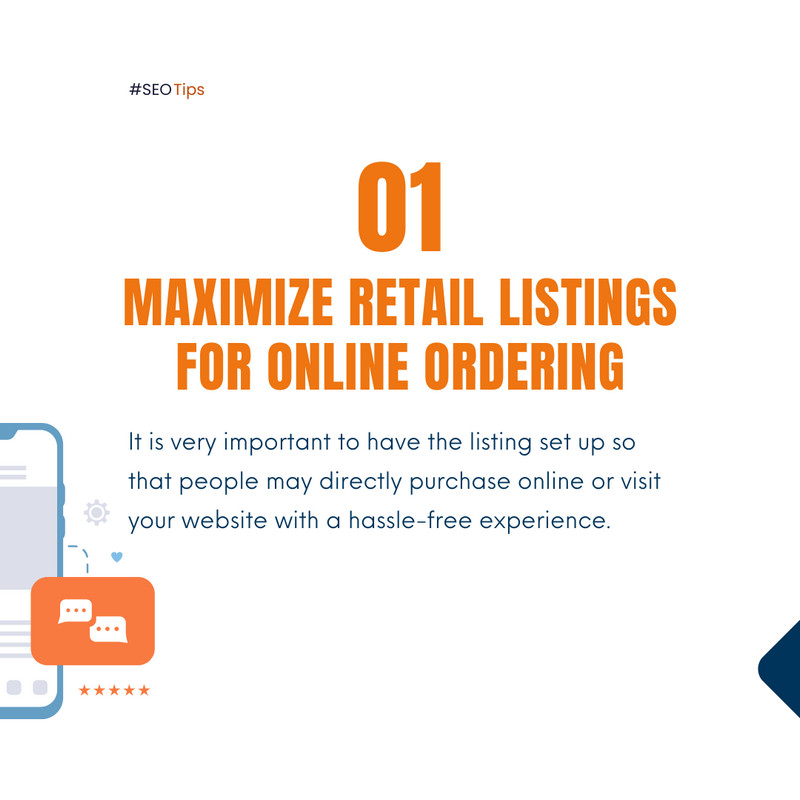
In setting up retail listings, make sure that potential clients will have a smooth experience in ordering online. To do so, your link should immediately direct the client to the first part of the ordering system: a menu page with a description of the main categories of your site and an optional search tool that will allow navigation to be easier.
Exercising transparency such as indicating the available delivery options and disclosing the primary materials used to create the product can make customers feel assured, sealing the trust they put in your business.
2. Integrate Local Inventory Ads
Local Inventory Ads should be considered by business owners to remove as much stumbling blocks as possible while also increasing the rank for specific items.
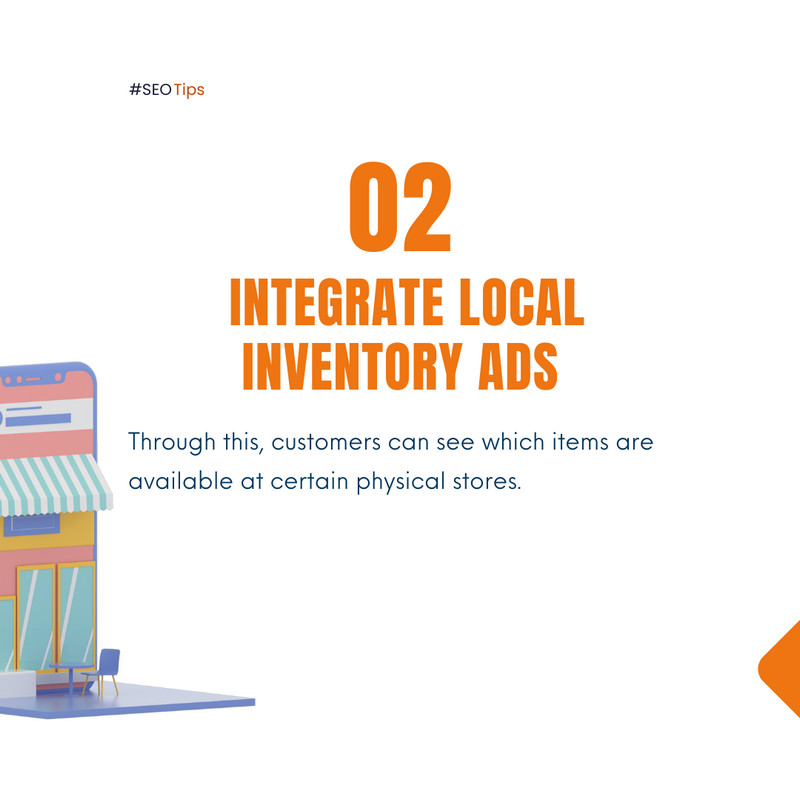
Through this, customers can see which items are available at certain physical stores. It also enables the listing to rank for specific goods that a consumer could search for on Google, as well as showing what is actually available at the location if they want to pick up their purchase.
A specific example of this would be a feature offered by Google: whenever a potential client clicks on the product advertisement, they will be redirected to the business’s Google-hosted storefront. Google also provides business owners with metrics to allow them to observe the growth of these advertisements.
3. Set up Online Ordering for Food Industry
Ordering online just got even better. While non-perishable goods being sold online were already a huge hit pre-pandemic, the online world became an avenue for the food industry to flourish amid the numerous lockdowns as people resorted to buying delivery food items for their own convenience.
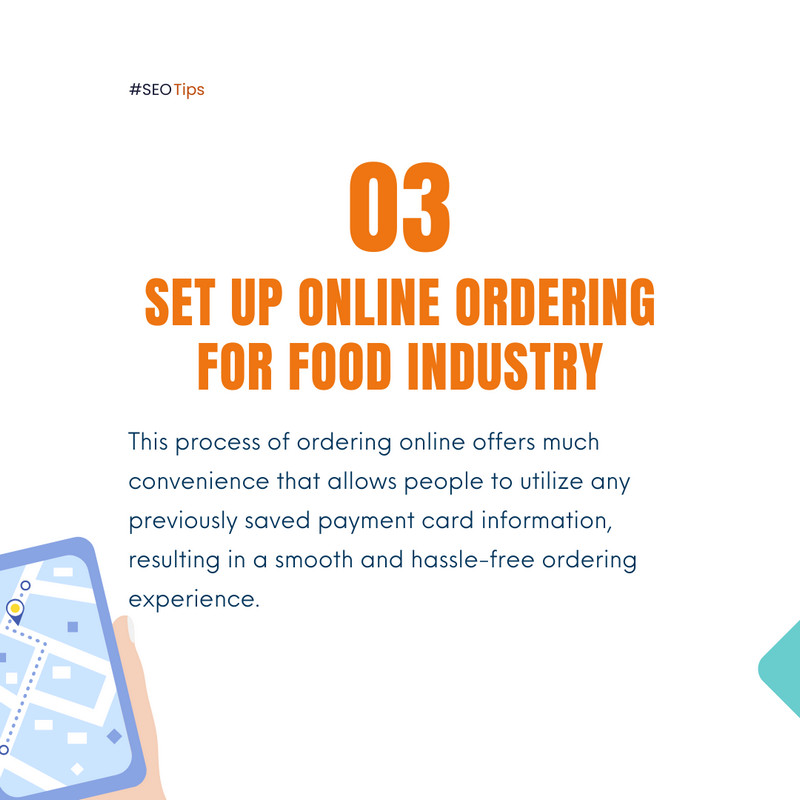
Google’s Business Profile feature allows restaurants to show online ordering straight on their listings if their primary category is set to ‘restaurant.’ Customers are presented with the choice to directly order from the restaurant or through a third-party service such as UberEats and DoorDash, among others.
Customers can also order from Google for locations that have been linked with the database. It will show you the menu items available at that location, along with their respective prices.
Moreover, the same integration feature will also enable customers to make any necessary changes to their orders, as well as checkout straight within Google.
This process of ordering online offers much convenience that allows people to utilize any previously saved payment card information, resulting in a smooth and hassle-free ordering experience.
4. Process Orders with Google for Food Industry
Processing orders online have become a lot easier due to emerging technologies. Restaurants have the option to either stick with the traditional way of gaining customers or participate in newly launched applications online which may be unfamiliar, but will allow them to have a shot at topping their industry.
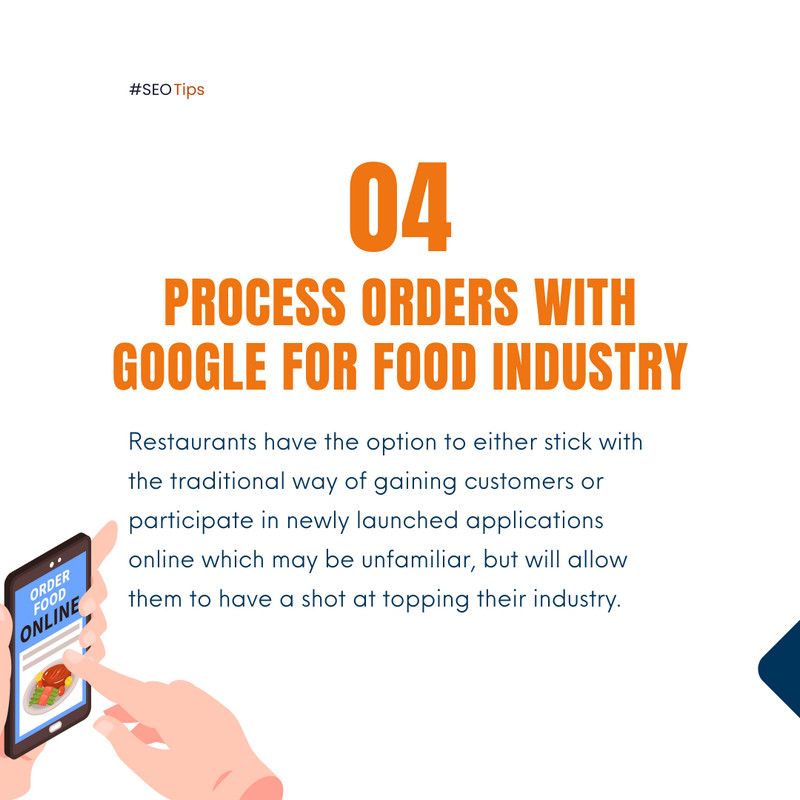
A good example of this would be the famous Order With Google feature that allows restaurants to reach more customers online, with the assistance of Google. To begin the process, restaurant owners can check their eligibility for the program wherein they are required to partner with an approved third-party order service and fill out a Google interest form. This document allows the developers to oversee the restaurant’s data and check to see if they are able to fulfill the launch criteria.
5. Maximize Location Pages
Location websites, including location listings, should be designed to cater to online ordering. On the main page, there should be obvious calls to action (CTAs) that inform customers that they may now begin the process of purchasing.
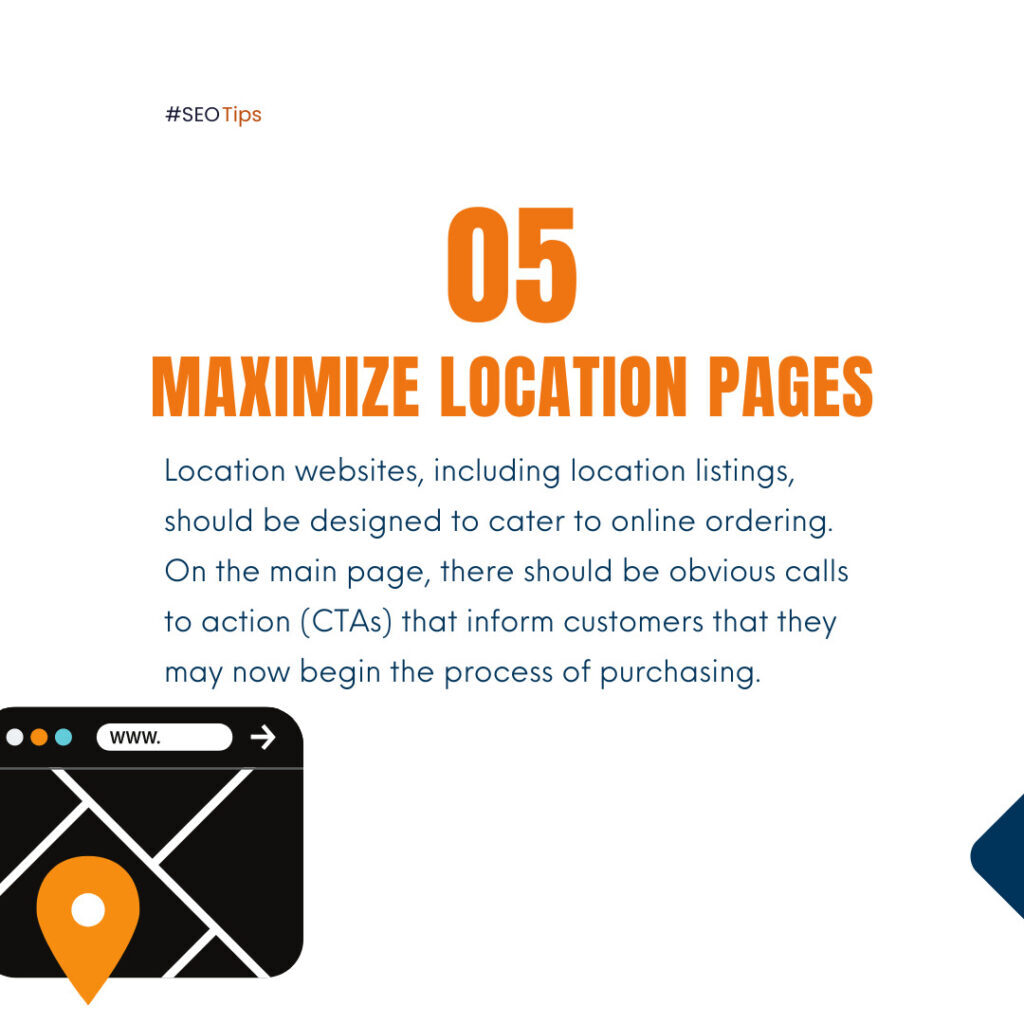
It should include additional information such as the available options for how customers can receive the items they bought (i.e. pick-up, delivery), as well as all of the important information that is necessary to keep the process smooth.
A relevant example of a company that thoroughly presents all of the available alternatives before pushing clients toward the order sequence with a clear CTA is the American department store chain Target.
CONCLUSION
E-commerce witnessed a dramatic rise in demand for online purchasing after COVID-19 caused individuals to physically separate themselves from the rest of the world. People flocked to online shops to get whatever they needed because most physical stores were closed during the pandemic’s onset; thus, when people resorted to online shopping, many small and large businesses adjusted their techniques.
It gave rise to a new type of competition to see who could have the biggest internet presence and bring in the most clients. Offline marketing strategies have been rendered useless due to the rise of internet adverts and promotions.
However, even before the epidemic, Search Engine Optimization (SEO) was already utilized with the primary purpose of raising foot traffic to a certain location.
Since the e-commerce industry boomed when the pandemic struck, SEO has become a crucial component of how businesses stay afloat. Businesses that employ SEO are clearly ahead of the competition since sites that are optimized for search engines are more likely to get more visits, resulting in increased sales.
This article delves into the direct impact of SEO on e-commerce, highlighting the critical role it plays in influencing customer behavior and needs by sharing specific SEO strategies and recommendations to assist businesses in maintaining and building their search presence—all of which have been discussed above.
Together with the ever-changing times, the search engine ranking algorithm is also continuously evolving. That being said, it is vital to remember that the SEO technique used last year may not work this year, and the method used today may not work in the next few years as well.
Thus, it is vital to always keep an eye on the current network and trends in e-commerce in order to stay on top of this fast-paced industry.

Bea Manzano
Bea have always been passionate about writing even at a young age. What started out as a hobby soon became her career. She has written blogs and articles for different industries such as Real Estate, Lumber Companies, Home Decors, Cat Hotels, Travel Industry, and many more. When she's not writing, you can find her either at home watching her favorite TV series while sipping milk tea or outdoors going on roadtrips with her family.

